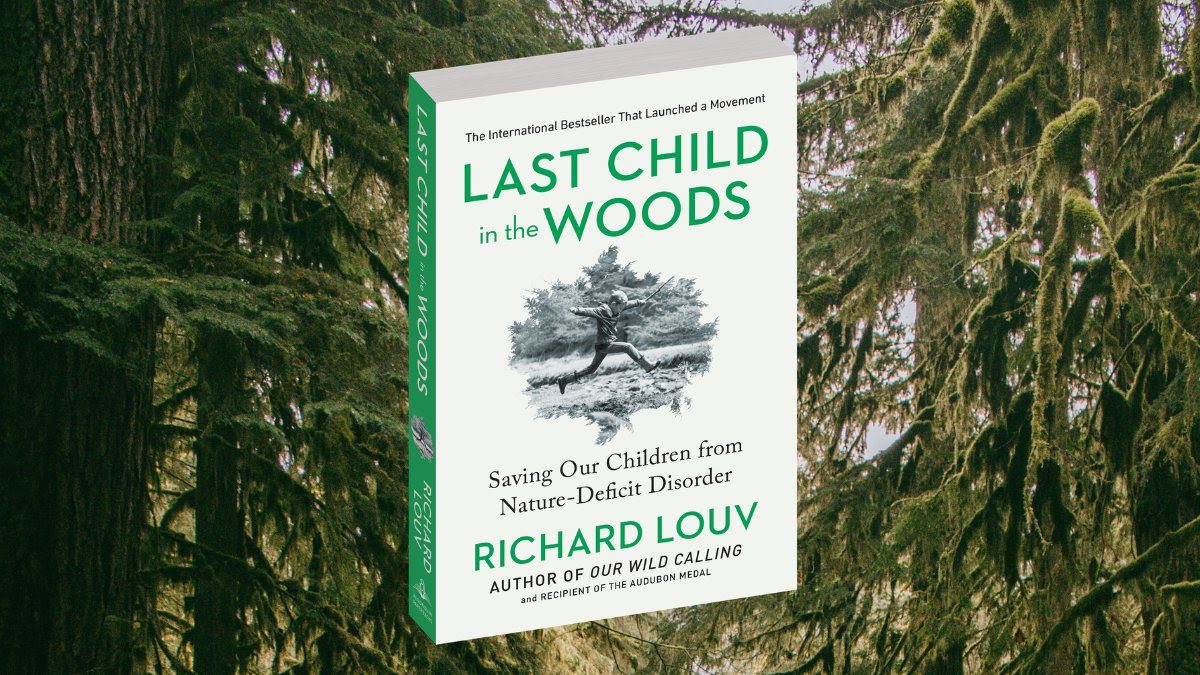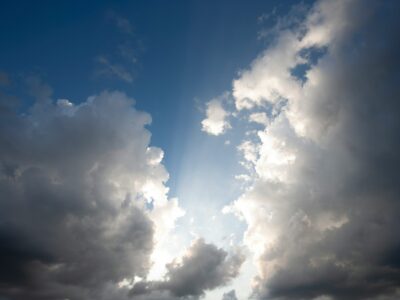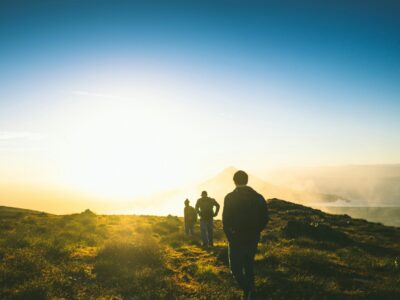The Saturday before Easter in my late teens, I went to the creek on my grandma’s farm. I had just had my heart broken by a young man I hoped to marry. Even though I knew in my mind it was right for the relationship to end, my heart couldn’t stand it. The creek banks were still yellowed grasses and naked, brown tangles of scrub. There wasn’t any new growth yet, just lots of what looked to be dead things cut open by the winding trickle of water.
I grew up across the street from my grandparents’ farm and frequented the creek, forest, and fields countless times. I had wandered through the woods with another boy, once, when everything was green and lush, in the heat of the summer. I knew the creek, and somehow the creek knew me. That Holy Saturday, the creek and its overgrown grasses understood my grief.
“Given a chance, a child will bring the confusion of the world to the woods, wash it in the creek, turn it over to see what lives on the unseen side of that confusion,” writes Richard Louv in Last Child in the Woods: Saving Our Children from Nature-Deficit Disorder. “Nature can frighten a child, too, and this fright serves a purpose. In nature, a child finds freedom, fantasy, and privacy: a place distant from the adult world, a separate peace.” No one told me that day to walk to the creek; the creek was my place of separate peace, an unconscious yet known and necessary destination for a confused and emotional young woman. It was a place of solace.
Why We Can’t Get the Kids Outside and What to Do About It
As an adult, I treasure the access I had to natural places in my youth, when so many other homes, landscapes, and neighborhoods lack wildness. I had never considered the void that might be created by being deprived of such experiences. In Last Child in the Woods, Louv presents the case for what a generation of children stands to lose if we don’t do something about their access to nature.
We all know free play and less screen time is good for our kids. “Go outside!” I screech at my children, who are captivated by screens. “I like to play indoors better ‘cause that’s where all the electrical outlets are,” a fourth grader in San Diego tells Louv.
It isn’t enough for us to tell our children to play outside. Louv insists when it comes to experiences in nature, parents have to practice what we preach. “Parents, educators, other adults, institutions—the culture itself—may say one thing to children about nature’s gifts, but so many of our actions and messages—especially the ones we cannot hear ourselves deliver—are different. And children hear very well.”
“We need to find a better balance between organized activities, the pace of our children’s lives, and their experiences in nature,” writes Louv. So what are we telling our children by our own actions? Louv says, “The most effective way to connect our children to nature is to connect ourselves to nature.”
But this seems so hard, so time consuming. We’re constantly battling the allure of electronics, our own exercise regimes, long commute times, soccer practice, piano lessons, and stressful work weeks. Who has time to keep kids entertained in nature?
So let them roam alone, Louv says.
And we all say, yeah right.
Fear of the Woods
One of the loudest messages our children hear is our own fear. When it comes to allowing children the freedom to play and roam, Louv shares how tight our grip can be: “In a 2002 survey, 56 percent of parents in the United States said that by the time they were ten years old they were allowed to walk or bike to school, but only 36 percent of those same parents said their own kids should be allowed to do the same, according to a national survey by TNS Intersearch for American Demographics magazine.”
I know what I’m afraid of; I’m afraid my kids are going to get hurt and not be able to contact me, or be taken by a stranger. Louv spends several chapters addressing these concerns, including compelling analysis of the influence news media reportage has on our perception of safety in our communities and the actual statistics of “stranger-danger.”
By depriving our children of opportunities to explore and be free in the name of their safety, we also deprive them of opportunities to learn and grow into confident, independent, and capable adults. “Play in nature may instill instinctual confidence,” writes Louv.
Redefining Outdoor Time
It would also help if we change our perception of where time in nature fits in our lives, says Louv. “Time in nature isn’t leisure time; it’s an essential investment in our children’s health.” There are many ways getting out into nature can help combat the rise of childhood obesity, diabetes, ADHD, anxiety, and depression in our youth.
“By taking nature experience out of the leisure column and placing it in the health column, we are more likely to take our children on that hike—more likely to, well, have fun,” says Louv. “Here is another way of viewing the challenge: nature as an antidote. Stress reduction, greater physical health, a deeper sense of spirit, more creativity, a sense of play, even a safer life—these are the rewards that await a family when it invites more nature into children’s lives.”
Creation and Our Connection to the Creator
That Holy Saturday by the creek was more than just a mental and emotional break for my broken heart, it was a spiritual experience. Creation and its seemingly dead state spoke to me: this is not the end. So much stands to be reborn from the dead grasses of last season. Let the water rush over you. It’s only Holy Saturday. Wait for Easter Sunday. Resurrection comes.
God uses his creation to connect us with the Creator. “Nature presents the young with something so much greater than they are; it offers an environment where they can easily contemplate infinity and eternity,” writes Louv. “Most of all, nature is reflected in our capacity for wonder.”
Out on a fishing trip with Robert F. Kennedy, Jr., Kennedy told Louv, “God communicates to us through each other and through organized religion, through wise people and the great books, through music and art, but nowhere with such texture and forcefulness in detail and gracy and joy, as through creation.”
Shouldn’t this connection with the Creator be preserved and resurrected for future generations? Louv’s book offers an in-depth analysis and solutions to our increasing nature-deficit disorder. There are changes we can make, from our own family’s activities to the way society shapes its communities. These connections to nature matter for dozens of reasons, not least of which is its impact on our relationship to the Creator.
Louv writes, “Inexplicable nature provokes humility,” and can’t we all use a little more humility, in this age of opinion and arrogance? It is not so hard. “Encourage your child to get to know a ten-square-yard area at the edge of a field, pond, or pesticide-free garden,” writes Louv. “Look for the edges between habitats: where the trees stop and a field begins; where rocks and earth meet water. Life is always at the edges. Together, sit at the edge of a pond in August—don’t move; wait.”
Learn more about Richard Louv and his work with the Children and Nature Network at richardlouv.com.





 Copyright
2024
Root and Vine
Copyright
2024
Root and Vine